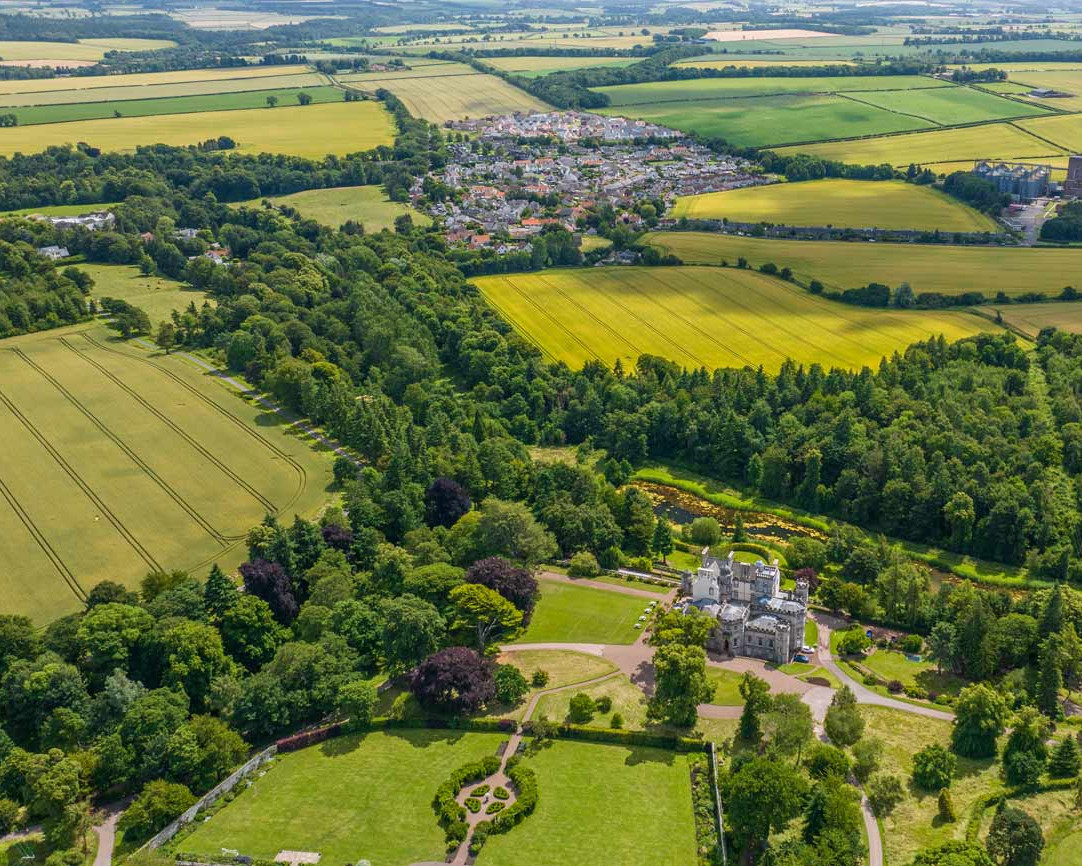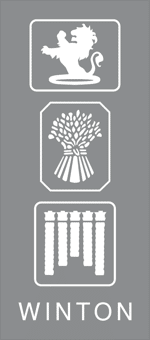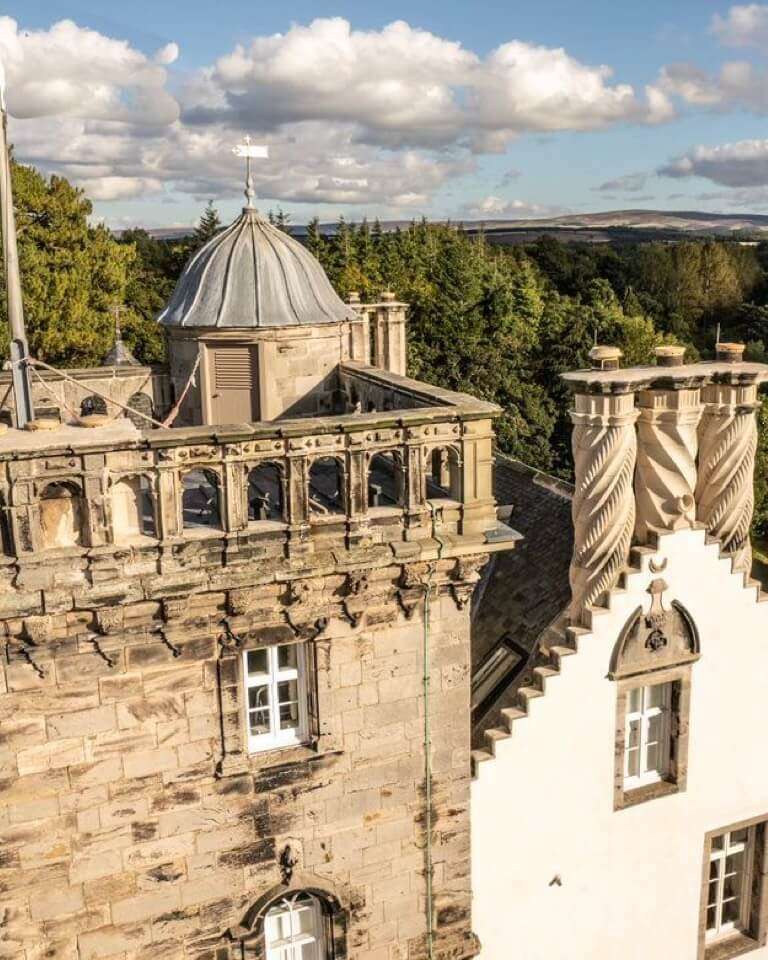The Winton Story
Told by Francis Ogilvy
“A place between heaven and earth” is one guest’s review of Winton – a country estate with a castle at its centre.
Noisy with wildlife and vibrant as a place to live and work – that’s the harmony we’re striving to achieve. Winton is also my family home, described by one journalist as ‘Intimacy on a grand scale’.
Entertaining at the highest level remains an important focus both in Winton Castle and around the estate. The high standard set reflects the society the original owners moved amongst with the Stuart kings and queens 400 years ago.
The traditional enterprises of farming, forestry and let property continue, though with added urgency for environmental gains. Profit, people and planet provide a combined focus, acknowledging also an inter-generational understanding that where privilege is given, responsibilities follow.
The story of Winton, as we know it, spans almost nine centuries. The first six of these set the scene with the Seton family being so well connected that the great and the good were either entertained at Winton, burnt it, or were otherwise linked to a rescue or marriage.
The Setons built the first tower house; undeterred after Henry VIII ordered it to be burnt when Mary Queen of Scots turned down his son Edward, it was rebuilt like a palace. Their loyalty to James VI and I earned them an Earldom of Winton; all that went after the Jacobite Rebellion.
The new owners of Winton, the Hamilton Nisbets, made their own mark and re-established a theme of entertaining on their various estates. They were at the centre of Scottish Society as lawyers, politicians and military officers; whilst the ladies did not have formal professions, they seemed to have held their own and won affection from the local communities.
The last of these, Constance Hamilton Nisbet, married Henry Ogilvy, a barrister from Dundee. Succession fell to his architect nephew, Gilbert, and a century on, we are now into a fifth generation of Ogilvys.
At its peak, the combined estates with Winton probably rivalled some of the most influential landholdings in the country. Winton Estate still tries to play its part and be progressive in outlook, regardless of scale. It is a resource that has so much to offer and as markets for hospitality, food and timber grow, this enables more jobs to be created.

Conservation & ESG: New Terms for an Established Practice
Rural estates have for centuries been considered businesses, but very personal and tied to a family. Planning is across generations which helps to justify why all profit is ploughed back into the estate for conservation work to land and buildings, otherwise not expected to yield any financial return.
Investment has been pragmatic to link needs with markets. When there was no heating to speak of in the castle and we had timber, we installed one of the first biomass district heating systems. This incentivised our forestry work which progressed to planting over 80,000 trees and investment in 2024 in a small sawmill.
Attention is now turning towards the farm and the changes there since being approved for conversion to an organic farm. This theme is consistent with our values of stewardship towards the land – wanting to see diversity and the regeneration of wildlife habitat amidst a thriving rural community.
Winton could not flourish and welcome so many guests without our fantastic staff, the support of our suppliers, trades people and the local community. The cyclical nature of our work keeps us motivated and grounded.

Guests' Feedback on Winton's Corporate Events

Guests' Feedback on Winton's Weddings
A Brand Steeped in Winton’s Heritage
This evolutionary story has become the Winton brand. The logo tells the story of the families and heritage of Winton:
- The rampant lion from the Ogilvy’s coat of arms;
- The wheat sheaf from the extraordinary castle drawing room ceiling, reflecting links with the Setons and the estate’s fertile farmland; and
- The carved, twisted chimneys so much a unique feature of the castle.
Each element is a cornerstone of Winton, aptly stamped out of silver, mimicking the impression of a silver hallmark.
The colours for the Winton branding have been drawn from the silver hallmark, and the pale green, yellow and red of the Ogilvy clan tartan. These colours are reflected on our website and elsewhere.

